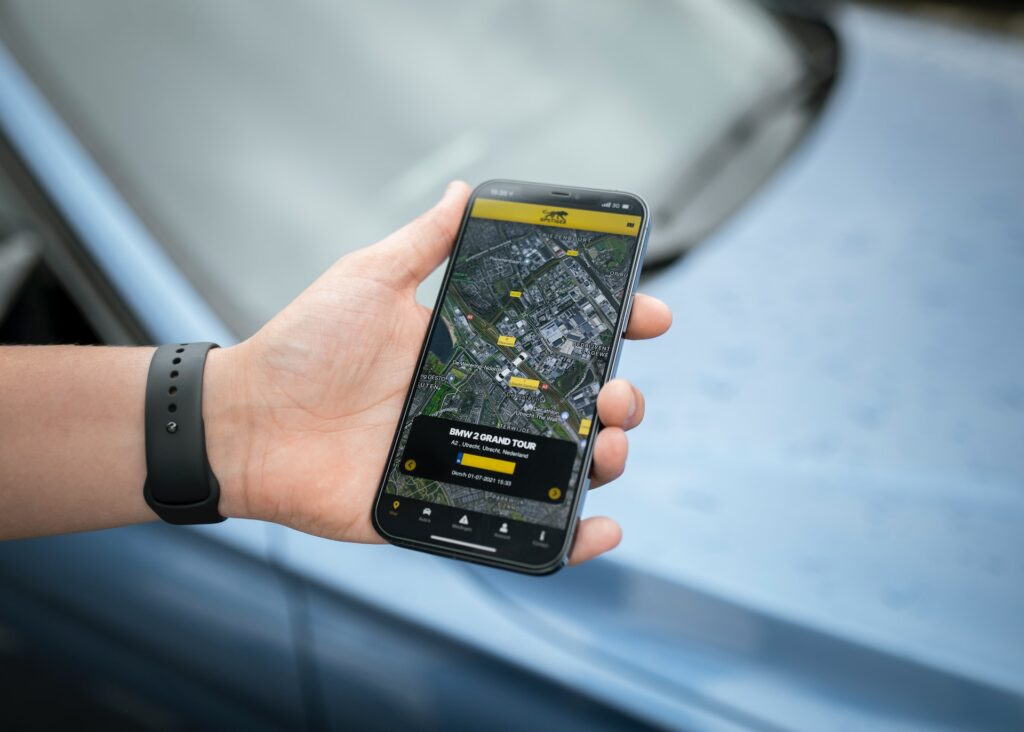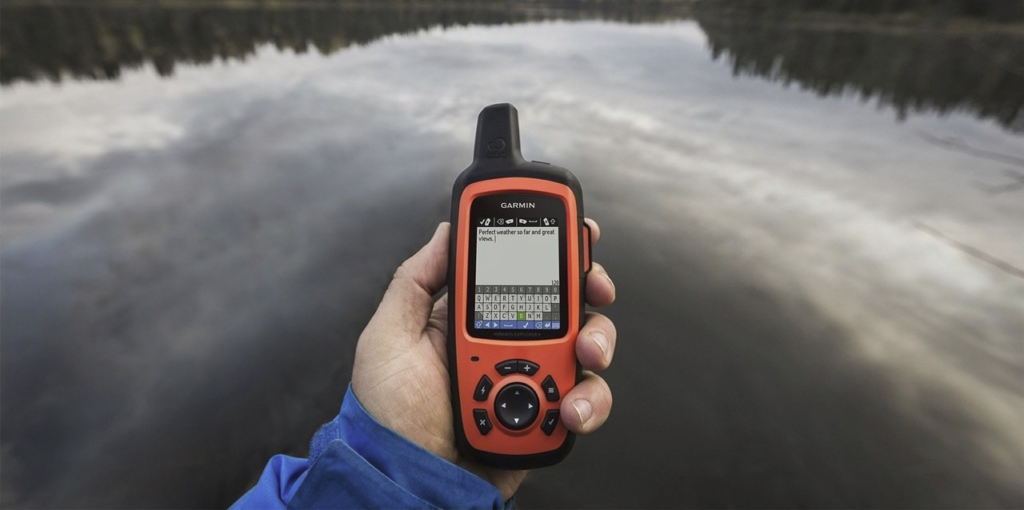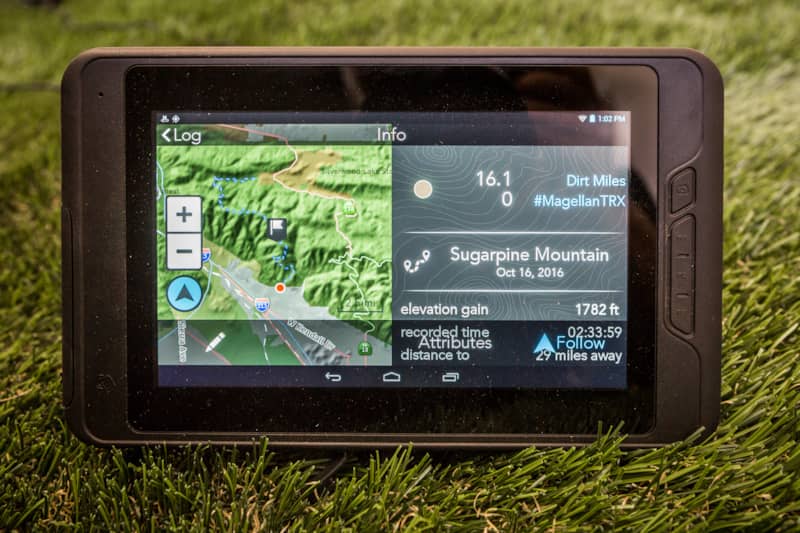
Introduction
Hiking and camping are great ways to get away from it all and enjoy the beauty of nature. But it’s important to be prepared for anything when you’re out in the wilderness, and that includes having the right gear. One of the most important pieces of gear for any hiker or camper is a GPS device.
GPS devices can help you stay on track, find your way back to camp, and even send for help in an emergency. With so many different GPS devices on the market, it can be tough to know which one is right for you. That’s why we’ve put together this guide to the best GPS devices for hiking and camping in 2023.
In this guide, we’ll review five of the top GPS devices on the market, and we’ll discuss the features that are important to consider when choosing a GPS device for your next outdoor adventure. We’ll also provide a buying guide to help you choose the right GPS device for your needs and budget.
So whether you’re a seasoned hiker or you’re just getting started, read on for our guide to the best GPS devices for hiking and camping in 2023.

What to Look for in a GPS Device for Hiking and Camping
Here are some of the things to look for in a GPS device for hiking and camping:
- Accuracy: The GPS device should be accurate enough to help you stay on track, even in remote areas.
- Durability: The GPS device should be rugged enough to withstand the elements and rough handling.
- Features: The GPS device should have the features you need, such as maps, tracking, and navigation tools.
- Battery life: The GPS device should have a long battery life, so you don’t have to worry about running out of power in the middle of your hike or camping trip.
- Weight: The GPS device should be lightweight and compact, so it’s easy to carry with you on your adventures.
- Price: GPS devices can range in price from a few hundred dollars to over a thousand dollars. Choose a device that fits your budget and needs.
Here are some of the specific features you may want to look for in a GPS device for hiking and camping:
- Maps: The GPS device should have preloaded maps of the area you’ll be hiking or camping in. If you’re going to be hiking in remote areas, you may also want to consider a GPS device that allows you to download additional maps.
- Tracking: The GPS device should be able to track your location and progress. This can be helpful for keeping track of how far you’ve hiked, how much time you’ve been hiking, and where you are in relation to your starting point.
- Navigation tools: The GPS device should have navigation tools, such as a compass and altimeter. These tools can help you find your way back to camp if you get lost, and they can also help you stay safe in the backcountry.
- Other features: Some GPS devices also have other features, such as the ability to send and receive text messages, take pictures, and play music. These features can be helpful for staying connected with friends and family, documenting your trip, and passing the time on long hikes.
Review of the Top 5 GPS Devices
1: Garmin GPSMAP 66i
The Garmin GPSMAP 66i is a rugged handheld GPS device that is designed for outdoor use. It has a variety of features that make it a good choice for hikers, campers, and other outdoor enthusiasts.

Pros
- Rugged and durable
- Large, sunlight-readable color display
- Built-in compass and altimeter
- Preloaded topographic maps
- The ability to download additional maps
- The ability to track your location and progress
- The ability to send and receive text messages
- The ability to send SOS alerts
Cons
- Expensive
- Battery life can be a bit short
- Not as user-friendly as some other GPS devices
Overall
The Garmin GPSMAP 66i is a great choice for hikers and campers who want a reliable and feature-rich GPS device. It is rugged and durable, and it has a variety of features that can help you stay safe and on track during your outdoor adventures. However, it is expensive and battery life can be a bit short.
2: Garmin eTrex 30x
The Garmin eTrex 30x is a handheld GPS device that is designed for outdoor use. It has a variety of features that make it a good choice for hikers, campers, and other outdoor enthusiasts.

Pros
- Rugged and durable
- Sunlight-readable color display
- Built-in compass and altimeter
- Preloaded topographic maps
- The ability to download additional maps
- The ability to track your location and progress
- The ability to create waypoints and routes
- Affordable
Cons
- Battery life can be a bit short
- Not as user-friendly as some other GPS devices
Overall
The Garmin eTrex 30x is a great choice for hikers and campers who want a reliable and feature-rich GPS device. It is rugged and durable, and it has a variety of features that can help you stay safe and on track during your outdoor adventures. However, it is not as user-friendly as some other GPS devices and battery life can be a bit short.
3: Garmin inReach Explorer+
The Garmin inReach Explorer+ is a satellite communicator that allows you to send and receive text messages, track your location, and send SOS alerts in case of an emergency. It’s a great option for hikers, campers, and other outdoor enthusiasts who want peace of mind knowing that they can always get help if they need it.

Here are some additional details about the pros and cons of the Garmin inReach Explorer+:
Pros:
- Two-way text messaging: The Garmin inReach Explorer+ allows you to send and receive text messages with other inReach users, as well as with anyone with an email address. This can be helpful for staying in touch with friends and family while you are on your adventures, or for getting help in an emergency.
- SOS alerts: The Garmin inReach Explorer+ can send SOS alerts to GEOS, a 24/7 search and rescue monitoring service. This can be a lifesaver if you get lost or injured in the wilderness.
- Tracking: The Garmin inReach Explorer+ can track your location and progress. This can be helpful for planning your trips, or for sharing your location with friends and family.
- Preloaded topographic maps: The Garmin inReach Explorer+ comes preloaded with topographic maps of North America. This can be helpful for hikers and campers who want to know the lay of the land before they set out on their adventures.
- Ability to download additional maps: The Garmin inReach Explorer+ allows you to download additional maps from Garmin’s website. This can be helpful if you are planning a trip to an area that is not covered by the preloaded maps.
- Ability to create waypoints and routes: The Garmin inReach Explorer+ allows you to create waypoints and routes. This can be helpful for hikers and campers who want to plan their trips in advance.
- Long battery life: The Garmin inReach Explorer+ has a battery life of up to 100 hours in GPS mode and up to 30 days in expedition mode. This means that you can use it for extended periods of time without having to worry about running out of power.
- Durable construction: The Garmin inReach Explorer+ is built to withstand the elements. It is water-resistant to 1 meter and can withstand drops from up to 1.5 meters. This makes it a good choice for hikers and campers who are likely to encounter wet and rough conditions.
Cons:
- Expensive: The Garmin inReach Explorer+ is a bit expensive. However, it is worth the price for hikers and campers who want a reliable and feature-rich satellite communicator.
- Not as user-friendly as some other GPS devices: The Garmin inReach Explorer+ can be a bit difficult to use for first-time users. However, once you get used to it, it is easy to use and navigate.
Overall, the Garmin inReach Explorer+ is a great choice for hikers and campers who want a reliable and feature-rich satellite communicator. It is rugged and durable, and it has a variety of features that can help you stay safe and on track during your outdoor adventures. However, it is expensive and not as user-friendly as some other GPS devices.
4: Suunto Traverse Alpha
The Suunto Traverse Alpha is a rugged GPS watch that is designed for outdoor use. It has a variety of features that make it a good choice for hikers, hunters, and other outdoor enthusiasts.

Here are some additional details about the pros and cons of the Suunto Traverse Alpha:
Pros:
- Built-in GPS and compass: The Suunto Traverse Alpha has a built-in GPS and compass, which can help you navigate your way through the wilderness.
- Preloaded topographic maps: The Suunto Traverse Alpha comes preloaded with topographic maps, which can help you plan your trips and stay on track.
- Ability to download additional maps: The Suunto Traverse Alpha allows you to download additional maps from Suunto’s website, which can be helpful if you are planning a trip to an area that is not covered by the preloaded maps.
- Ability to track your location and progress: The Suunto Traverse Alpha can track your location and progress, which can be helpful for planning your trips and staying on track.
- Ability to create waypoints and routes: The Suunto Traverse Alpha allows you to create waypoints and routes, which can be helpful for planning your trips and staying on track.
- Ability to send and receive text messages: The Suunto Traverse Alpha allows you to send and receive text messages, which can be helpful for staying in touch with friends and family while you are on your adventures.
- Ability to send SOS alerts: The Suunto Traverse Alpha allows you to send SOS alerts, which can be a lifesaver if you get lost or injured in the wilderness.
- Water-resistant to 100 meters: The Suunto Traverse Alpha is water-resistant to 100 meters, which means that you can use it in the rain or snow without having to worry about it getting damaged.
- Durable construction: The Suunto Traverse Alpha is built to withstand the elements, which makes it a good choice for hikers and campers who are likely to encounter wet and rough conditions.
Cons:
- Expensive: The Suunto Traverse Alpha is a bit expensive. However, it is worth the price for hikers and campers who want a reliable and feature-rich GPS watch.
- Not as user-friendly as some other GPS watches: The Suunto Traverse Alpha can be a bit difficult to use for first-time users. However, once you get used to it, it is easy to use and navigate.
Overall, the Suunto Traverse Alpha is a great choice for hikers and campers who want a reliable and feature-rich GPS watch. It is rugged and durable, and it has a variety of features that can help you stay safe and on track during your outdoor adventures. However, it is expensive and not as user-friendly as some other GPS watches.
5: Magellan eXplorist TRX7
The Magellan eXplorist TRX7 is a rugged handheld GPS device that is designed for outdoor use. It has a variety of features that make it a good choice for hikers, campers, and other outdoor enthusiasts.

Here are some additional details about the pros and cons of the Magellan eXplorist TRX7:
Pros:
- Built-in GPS and compass: The Magellan eXplorist TRX7 has a built-in GPS and compass, which can help you navigate your way through the wilderness.
- Preloaded topographic maps: The Magellan eXplorist TRX7 comes preloaded with topographic maps, which can help you plan your trips and stay on track.
- Ability to download additional maps: The Magellan eXplorist TRX7 allows you to download additional maps from Magellan’s website, which can be helpful if you are planning a trip to an area that is not covered by the preloaded maps.
- Ability to track your location and progress: The Magellan eXplorist TRX7 can track your location and progress, which can be helpful for planning your trips and staying on track.
- Ability to create waypoints and routes: The Magellan eXplorist TRX7 allows you to create waypoints and routes, which can be helpful for planning your trips and staying on track.
- Ability to send and receive text messages: The Magellan eXplorist TRX7 allows you to send and receive text messages, which can be helpful for staying in touch with friends and family while you are on your adventures.
- Ability to send SOS alerts: The Magellan eXplorist TRX7 allows you to send SOS alerts, which can be a lifesaver if you get lost or injured in the wilderness.
- Water-resistant to 1 meter: The Magellan eXplorist TRX7 is water-resistant to 1 meter, which means that you can use it in the rain or snow without having to worry about it getting damaged.
- Durable construction: The Magellan eXplorist TRX7 is built to withstand the elements, which makes it a good choice for hikers and campers who are likely to encounter wet and rough conditions.
- 7-inch touchscreen display: The Magellan eXplorist TRX7 has a large, 7-inch touchscreen display that makes it easy to see and interact with the map and other features.
- Long battery life: The Magellan eXplorist TRX7 has a long battery life, which means that you can use it for extended periods of time without having to worry about it running out of power.
Cons:
- Expensive: The Magellan eXplorist TRX7 is a bit expensive. However, it is worth the price for hikers and campers who want a reliable and feature-rich GPS device.
- Not as user-friendly as some other GPS devices: The Magellan eXplorist TRX7 can be a bit difficult to use for first-time users. However, once you get used to it, it is easy to use and navigate.
Overall, the Magellan eXplorist TRX7 is a great choice for hikers and campers who want a reliable and feature-rich GPS device. It is rugged and durable, and it has a variety of features that can help you stay safe and on track during your outdoor adventures. However, it is expensive and not as user-friendly as some other GPS devices.

Comparison Table
here is a comparison table for the best GPS devices for hiking and camping:
| Feature | Garmin GPSMAP 66i | Garmin eTrex 30x | Garmin inReach Explorer+ | Suunto Traverse Alpha | Magellan eXplorist TRX7 |
| Price | $649.99 | $299.99 | $499.99 | $599.99 | $599.99 |
| Size | 5.5 x 3.1 x 1.2 inches | 4.3 x 2.4 x 1.2 inches | 5.5 x 3.1 x 1.2 inches | 4.8 x 2.8 x 1.3 inches | 7.1 x 3.8 x 1.7 inches |
| Weight | 7.1 ounces | 4.2 ounces | 5.6 ounces | 5.4 ounces | 14.8 ounces |
| Battery life | Up to 36 hours | Up to 16 hours | Up to 14 days | Up to 14 days | Up to 24 hours |
| Display | 3.6-inch sunlight-readable color display | 2.6-inch sunlight-readable color display | 3.5-inch sunlight-readable color display | 2.8-inch sunlight-readable color display | 7-inch sunlight-readable color display |
| Best for | Hikers and campers who want a reliable and feature-rich GPS device | Hikers and campers who are looking for a budget-friendly option | Hikers and campers who want a GPS device with satellite communication capabilities | Hikers and campers who want a rugged and durable GPS device | Hikers and campers who want a large, touchscreen GPS device |
As you can see, there are a variety of great GPS devices available for hikers and campers. The best device for you will depend on your individual needs and budget. If you are looking for a reliable and feature-rich device, the Garmin GPSMAP 66i, Garmin inReach Explorer+, or Suunto Traverse Alpha are all great options.
Conclusion
In conclusion, there are a variety of great GPS devices available for hikers and campers. The best device for you will depend on your individual needs and budget. If you are looking for a reliable and feature-rich device, the Garmin eTrex 30x, Garmin inReach Explorer+, Suunto Traverse Alpha, or Magellan eXplorist TRX7 are all great options. However, if you are on a budget or are looking for a more user-friendly device, there are other options available.
Once you have considered your needs and budget, you can start shopping for a GPS device. Be sure to read reviews and compare features before making a purchase.
Read more articles here.





